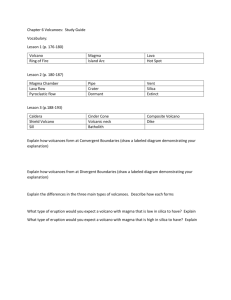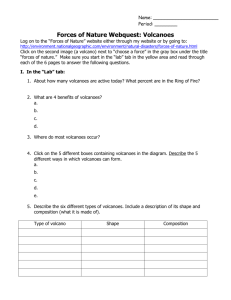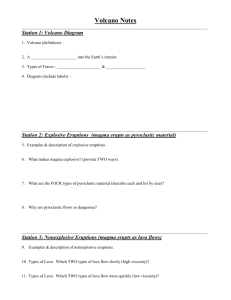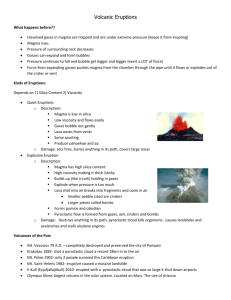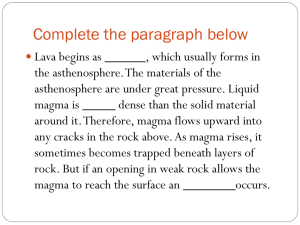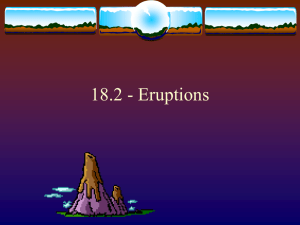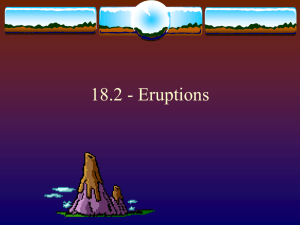Chapter 18 Notes
advertisement
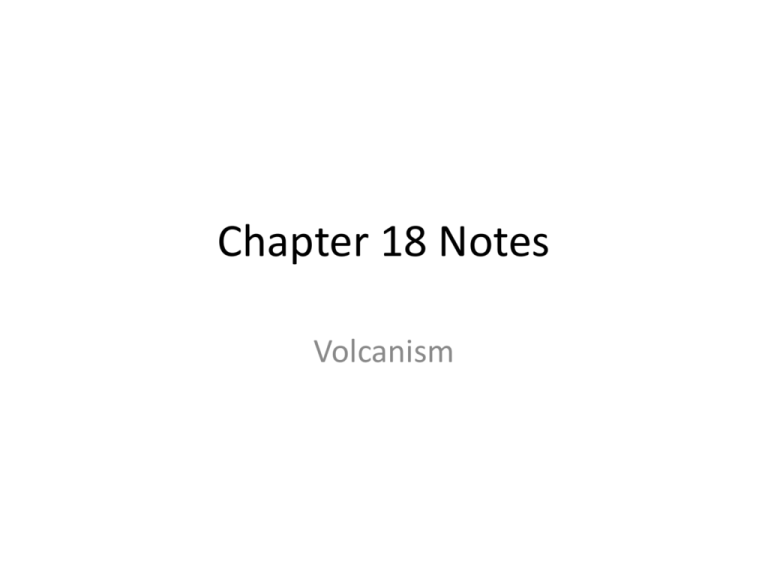
Chapter 18 Notes Volcanism Volcanoes • The location of volcanoes on Earth is not random Volcanoes at Convergent Boundaries • Most volcanoes on land are at subduction zones, characterized by explosive eruptions – Circum-Pacific belt (Ring of Fire; ex: Pinatubo, St. Helens) – Mediterranean Belt (ex: Vesuvius, Etna) Volcanoes at Divergent Boundaries • About 2/3 of the Earth’s volcanic activity occurs underwater at divergent boundaries • Mid-ocean ridges • Non-explosive, produces large amounts of lava Hot Spot Volcanoes • Some volcanoes form over stationary magma plumes (hot spots), not at plate boundaries • As a plate moves over the hot spot, a chain of islands is formed Flood Basalts • Hot spots beneath continental crust can form flood basalts Anatomy of a Volcano • Magma travels from the magma chamber, through a conduit and lava emerges through a vent • Craters form around the vent Volcano Comparison • Appearance of a volcano depends on the type of eruptions and the type of material forming the volcano • Shield: non-explosive • Cinder: small, steep • Composite: explosive Eruptions • Characteristics of an eruption are determined by: – Temperature – Pressure – Magma composition (silica content) – Dissolved gases (think about opening a can of pop that has been shaken) – Viscosity (determined by temperature and composition) Types of Magma: Basaltic • Silica content: low (less than 50%) • Viscosity: low • Eruptions: quiet, very frequent • Example: Kilauea, Hawaii Types of Magma: Andesitic • Silica content: 50 to 60% • Viscosity: intermediate • Eruptions: intermediate explosivity • Examples: Tambora, Indonesia; Colima, Mexico Types of Magma: Rhyolitic • Silica content: high (more than 60%) • Viscosity: high, lots of dissolved gas • Eruptions: explosive, very infrequent • Example: Yellowstone Explosive Eruptions • Tephra: solid fragments of rock ejected from a volcanic vent – Ash (less than 2mm) – Bombs – Blocks • Pyroclastic flows: clouds of tephra mixed with hot gases Pyroclastic flow Intrusive Activity • Plutons form from volcanic activity below the Earth’s surface – Batholiths: large, irregular shape – Stocks: small irregular shape – Laccoliths: round top, flat bottom – Sills: parallel to existing rock – Dikes: cut across existing rock Plutons
